Mastering Micro-Interaction Feedback: Precise Techniques for Elevated User Engagement
Micro-interactions are the subtle yet powerful moments that shape user perceptions and influence engagement. Among their core components, feedback mechanisms serve as the vital communication layer, informing users about system responses, guiding behavior, and reinforcing trust. While Tier 2 introduced the importance of feedback types and timing, this deep dive explores concrete, expert-level strategies to optimize feedback in micro-interactions for maximum impact, with actionable techniques rooted in real-world implementation.
Table of Contents
- 1. Understanding and Designing Effective Feedback Mechanisms in Micro-Interactions
- 2. Fine-Tuning Micro-Interaction Triggers for Enhanced Engagement
- 3. Crafting Seamless Transitions Between Micro-Interactions
- 4. Personalization of Micro-Interactions to Boost User Connection
- 5. Testing and Iterating Micro-Interaction Enhancements
- 6. Accessibility Considerations in Micro-Interaction Optimization
- 7. Integrating Micro-Interactions with Overall User Journey and UX Strategy
- 8. Final Recommendations: Delivering Tangible Value through Micro-Interaction Optimization
1. Understanding and Designing Effective Feedback Mechanisms in Micro-Interactions
a) How to Choose the Right Feedback Type (visual, auditory, haptic) Based on Context and User Preference
Selecting the appropriate feedback modality is foundational to effective micro-interaction design. To do so, start with a contextual analysis of the user environment and task complexity. For example, visual feedback—such as subtle color shifts or icon animations—is ideal in low-noise, visually rich contexts like dashboards or mobile apps where users are actively engaging visually. Conversely, auditory cues (e.g., a subtle chime) are more effective in scenarios where visual attention is divided, such as when users are on the move or multitasking.
Haptic feedback, like device vibrations, enhances tactile perception and is particularly impactful for actions requiring confirmation of success or error, especially in mobile or wearable interfaces. Actionable tip: Use haptic feedback sparingly to avoid fatigue; reserve it for critical confirmations, such as form submission success or error alerts.
To tailor feedback to user preferences, incorporate user settings where possible, allowing users to customize feedback modalities or disable certain types—this increases comfort and perceived control. Conduct user surveys or analyze usage data to identify predominant preferences per demographic or device type.
b) Step-by-Step Guide to Implementing Feedback Timing and Duration for Maximum Impact
- Define feedback objectives: Clarify if feedback confirms action, indicates progress, or warns of errors.
- Determine feedback timing: Implement immediate feedback for critical actions (e.g., button press), and delayed feedback for less urgent cues (e.g., data saving confirmation).
- Set feedback duration: Use brief durations (150-300ms) for transient signals like checkmarks; longer durations (up to 600ms) for more noticeable cues, such as onboarding prompts.
- Use fade-in/out effects: Smooth transitions reduce abruptness, making feedback feel natural. For example, animate a success checkmark fading in, then fading out after 2 seconds.
- Test timing variations: Use A/B testing to identify optimal delays—sometimes a slight delay (e.g., 50ms) enhances perception of system responsiveness.
c) Common Pitfalls in Feedback Design and How to Avoid Them
- Overloading with feedback: Too many signals can overwhelm users. Solution: Use a hierarchy—reserve prominent feedback for critical actions, and subtle cues for minor updates.
- Delayed feedback: Lag in response causes confusion. Solution: Ensure immediate feedback within 100ms for tactile and visual cues.
- Inconsistent feedback patterns: Variability reduces predictability. Solution: Standardize feedback across similar interactions to build user mental models.
- Ignoring accessibility: Feedback should be perceivable by all users. Solution: Combine visual cues with haptic or auditory signals where appropriate.
2. Fine-Tuning Micro-Interaction Triggers for Enhanced Engagement
a) How to Identify Optimal Trigger Points Using User Behavior Data
Effective trigger points rely on understanding user behavior patterns. Use analytics tools like heatmaps, scroll tracking, and time-on-task metrics to identify moments of friction or high engagement. For example, if data shows users often hesitate or abandon during a specific form field, triggering micro-interactions—like inline validation or helpful tips—at that precise moment can re-engage users.
Leverage event-driven analytics: track actions such as mouse hovers, click patterns, or scroll depth to pinpoint natural interaction points. Tools like Google Analytics or Mixpanel can help segment users based on their interaction timing, revealing which triggers resonate most.
b) Technical Methods for Implementing Context-Aware Triggering (e.g., scroll position, time spent)
Implement context-aware triggers through JavaScript event listeners or Intersection Observers:
| Trigger Type | Implementation Technique | Example |
|---|---|---|
| Scroll position | IntersectionObserver API | Trigger tooltip when user scrolls to 50% of a section |
| Time spent on page | setTimeout with activity detection | Show prompt if user spends >30 seconds without interaction |
| User inactivity | Event listeners for mouse/keyboard inactivity | Offer help after 60 seconds of inactivity |
Combine these techniques with real-time data to trigger micro-interactions that feel organic and timely, enhancing user engagement without annoyance.
c) Case Study: A/B Testing Trigger Variations to Maximize Response Rates
Consider an e-commerce checkout flow where subtle prompts are triggered based on scroll depth:
- Variation A: Prompt appears after 50% scroll, offering free shipping info.
- Variation B: Prompt appears after 80% scroll, emphasizing limited-time deals.
Results showed that Variation B increased click-through rate by 22%, demonstrating the importance of trigger timing. Use tools like Optimizely or Google Optimize to set up these experiments, analyze data, and iterate trigger points based on statistically significant responses.
3. Crafting Seamless Transitions Between Micro-Interactions
a) How to Use Animation and Motion Design for Natural Flow
Transitions should mimic real-world physics and user expectations. Use CSS transitions or JavaScript animation libraries like GSAP to create fluid motion. For example, when a user toggles a switch, animate the sliding knob with a cubic-bezier easing curve for a natural feel:
.switch { transition: all 0.3s cubic-bezier(0.4, 0, 0.2, 1); }
Incorporate principles of motion design such as ease-in, ease-out, and anticipation to make transitions feel intuitive and responsive.
b) Implementing Progressive Disclosure to Reduce Cognitive Load During Transitions
Progressive disclosure involves revealing information in stages, guiding users naturally through complex flows. For example, in a multi-step form, initially show only essential fields. When a user completes a step, animate the transition to reveal the next set of inputs:
- Step 1: Fade out current section
- Step 2: Slide in next section from right
- Step 3: Focus on the first input of the new section
This approach minimizes cognitive overload and creates a sense of progress, encouraging continued interaction.
c) Practical Example: Step-by-step Integration of Transition Effects in a Signup Form
- Set up HTML structure: Divide form into sections with classes for each step.
- Apply CSS transitions: Use opacity and transform properties for smooth fade and slide effects.
- Implement JavaScript control: On ‘Next’ button click, animate current section out, then animate the next section in.
- Enhance accessibility: Manage focus states and ARIA attributes for assistive technologies.
This implementation ensures that transitions are not abrupt, maintaining user orientation and reducing abandonment.
4. Personalization of Micro-Interactions to Boost User Connection
a) How to Collect and Use User Data Responsibly for Personalization
Personalization hinges on ethically gathering relevant data, such as user preferences, past interactions, or demographic info. Use consent-driven data collection methods—explicitly inform users about how their data will enhance their experience. Implement privacy safeguards like anonymization and encryption.
Leverage tools such as cookie consent banners, and provide options to opt-in or out of personalization features. Regularly audit data collection processes to ensure compliance with regulations like GDPR or CCPA.
For example, in an e-commerce site, track previous purchases and browsing history to dynamically tailor micro-interactions, such as personalized product recommendations or targeted prompts.
b) Technical Approach to Dynamic Content Changes in Micro-Interactions
Implement dynamic content updates using JavaScript frameworks (React, Vue.js) or vanilla JS DOM manipulation. Key steps include:
- Identify user data points: Fetch user profile info from your API.
- Create conditional rendering logic: Show different micro-interaction content based on data (e.g., greeting with the user’s name).
- Animate content transitions: Use CSS transitions or libraries like Animate.css to smoothly update content without jarring shifts.
Example: When a user logs in, replace a generic welcome message with a personalized greeting, accompanied by a subtle fade-in effect.
c) Case Study: Personalizing Micro-Interactions in E-commerce for Increased Conversion
A fashion retailer integrated personalized product suggestions in micro-interactions, such as:
- Dynamic badges indicating “Recommended for You” based on browsing history
- Personalized hover tooltips showing size availability and price adjustments
- Customized checkout prompts, e.g.,






